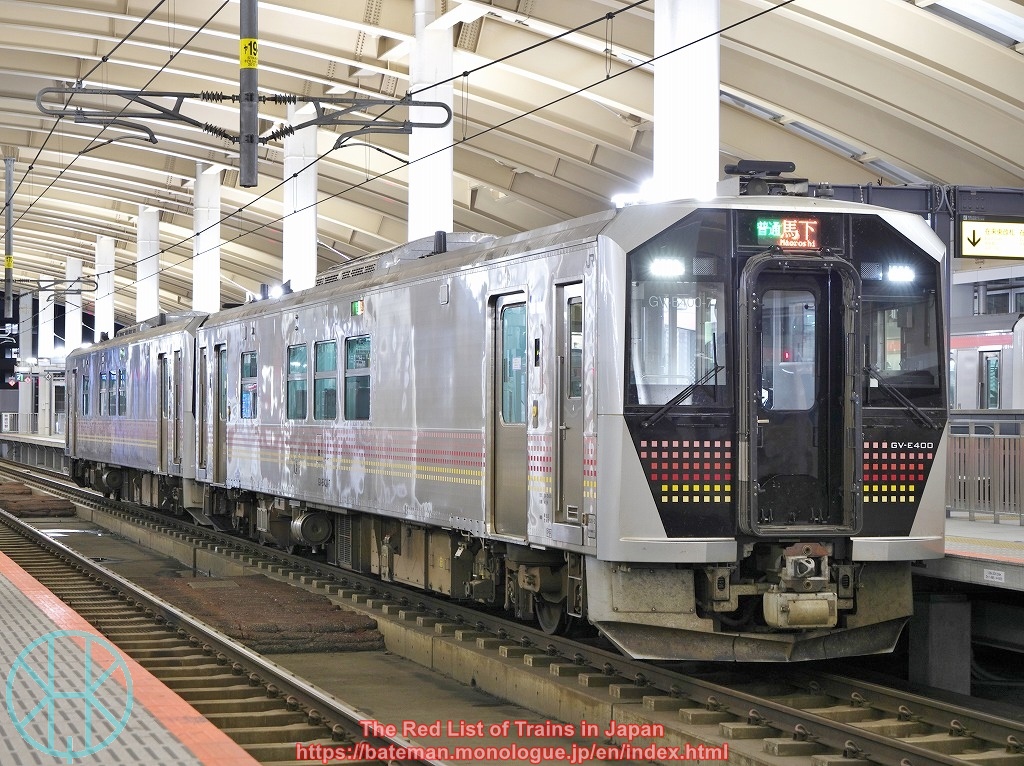JR East GV-E400 series

Data (as of 29 Nov 2025)
| Status: | Least Concern |
| Constructed in: | 2018-21 |
| Number built: | 63 |
| Registered: | 63 |
History
GV-E400 series is a type of suburban train. According to JR East, GV stands for "Generating Vehicle" as it is an diesel-electric train (which is not common in Japan). However, unlike other recently-developed trains like HB-E210 series, the GV-E400 series is not a hybrid train. The GV-E400 series was developed as a successor to KiHa 40 series, and JR East decided not to introduce diesel-hydraulic trains, as diesel-electric trains are less costly when it comes to maintenance (since JR East engineers have been more well versed in electic multiple units than diesel ones). The series has three types: GV-E400 (double-ended with an accessible toilet), GV-E401 (single-ended with the toilet) and GV-E402 (single-ended without toilet).
The series was introduced to Akita and Niigata areas. Those for Akita have blue and white bands representing the Sea of Japan, while others for Niigata have yellow and pink spots. Since both areas are known for low temperature and heavy snow in winter, the train is specifically designed to cope with them such as enhanced air-conditioning and braking systems.
JR Hokkaido later introduced H100 series, which is based on the GV-E400 series.
Current Operations & Future Prospects
As mentioned above, the GV-E400 series trains are allocated to two depots: Akita and Niigata. Those in Akita are used on Gono and Tsugaru Lines as well as Ou Main Line as far as Aomori. The others in Niigata are used for Ban-etsu West Line between Niigata and Aizu-Wakamatsu, Uetsu Main Line as far as Sakata and Yonesaka Line.
JR East has a plan to introduce more to other rural railways in the Northeastern region, but no detailed announcement has been made so far.
